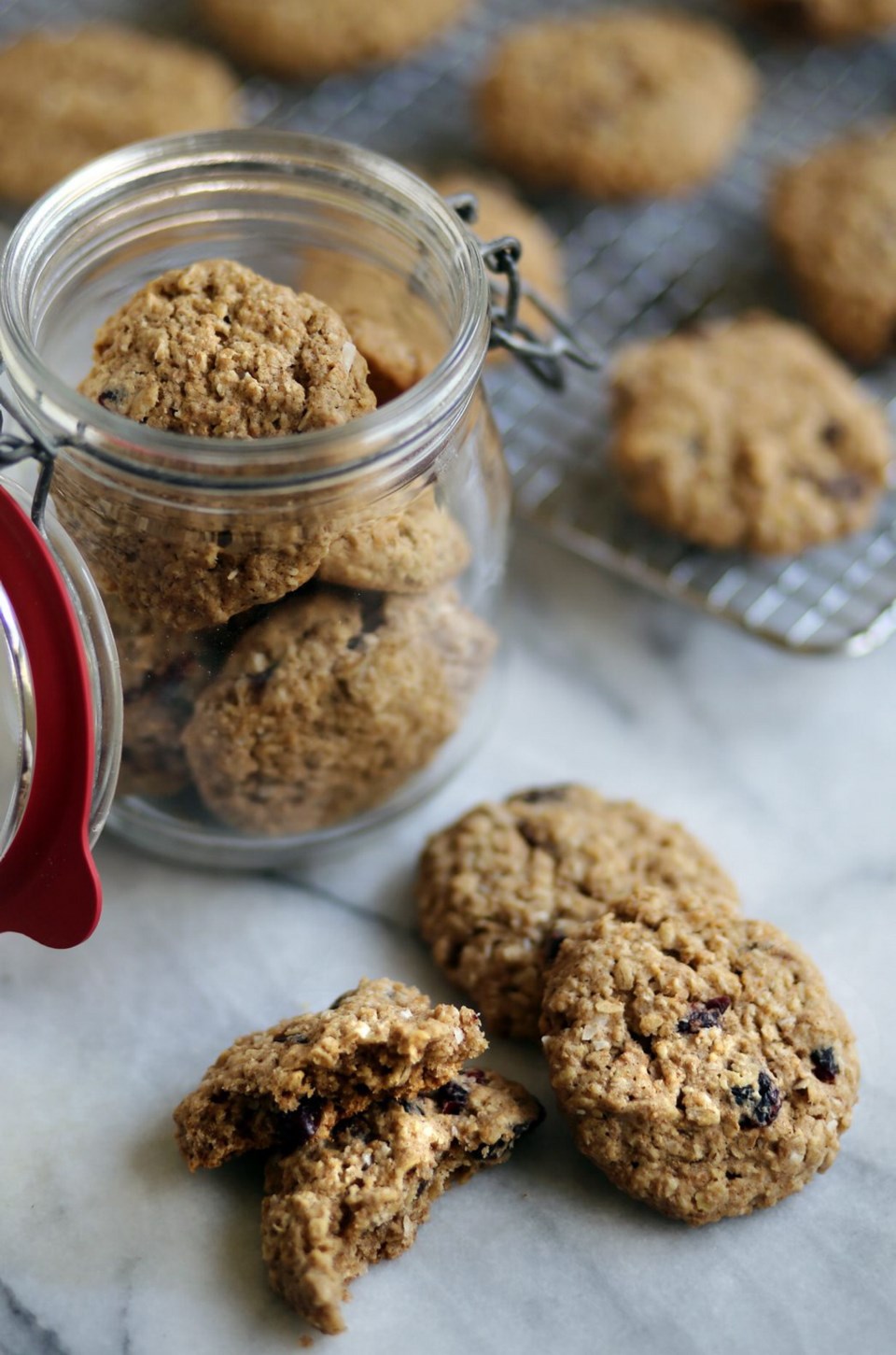 Dear Eric: I like to reduce the amount of sugar in my baking. I routinely cut the amount suggested by at least half. Will this affect the finished product, in terms of the chemistry of the mixture?
Dear Eric: I like to reduce the amount of sugar in my baking. I routinely cut the amount suggested by at least half. Will this affect the finished product, in terms of the chemistry of the mixture?
Pat
Dear Pat: Baking recipes are formulas and if you mess around by significantly reducing a key ingredient, they won’t turn out as designed. And sugar is definitely a key ingredient in many baking recipes served for dessert or a sweet snack, such as cakes, bars and cookies.
In the Sugar 101 section of Anna Olson’s great book, Back to Baking, she writes that recipes are designed to use sugars in particular quantities for reasons beyond sweetness. So, if you change the amounts, a ginger snap might not snap or shortbread might not melt in your mouth.
That’s why Olson writes that you cannot reduce the amount of sugar without affecting the taste, texture and shelf life of a dessert. As sugar melts in a dessert, it also caramelizes to give the cookie or cake an appealing golden colour.
Given the bad press sugar has had recently and its connection to rising obesity rates, it’s easy to understand why you want to cut back on its use. (The World Health Organization recently suggested that people should cut their free sugar intake to between five and 10 per cent of their overall calories.)
Free sugar is any class of sugar added to foods by the manufacturer, cook or consumer, plus those naturally present in fruits and fruit products or honey and syrups.
If you reduced your daily intake to 10 per cent, that would equal about 12 teaspoons of sugar, which is a quarter cup. Five per cent, which is being recommend for children, equals about 22 grams of sugar, or six teaspoons.
At first glance, to me, that seems like a lot of sugar. For example, a number of cookie recipes call for one cup of sugar to make 24 cookies. That equates to two teaspoons of sugar per cookie. If you were a child, you could have two cookies and still have two more teaspoons of sugar to enjoy somewhere elsewhere that day, adults even more.
The problem, of course, is that sugar these days is hidden in so many foods. For example, one tablespoon of ketchup can contain about one teaspoon of sugar. That’s something to think about the next time you put a blob of it beside your grilled-cheese sandwich.
The beautiful thing about home baking is that you do know how much sugar you are adding. Also, you might make a batch of cookies or a cake only once a week, so why not bake the recipe as designed and enjoy it? Every dietitian I’ve ever interviewed says all foods, in moderation, fit into a healthy diet.
That said, Pat, if you still feel the need to reduce the sugar, don’t be so drastic. Instead of reducing the sugar in a recipe by half, try reducing the amount by an eighth or a quarter, and see how the results compare to the original recipe.
You can also make the portion sizes of the original recipe smaller. For example, if a cookie recipe says to roll it into 24 balls, roll it into 32, or make mini cupcakes instead of large ones.
Also, because of all the alarm being raised about sugar these days, there is no shortage of new cookbooks and websites dedicated to low-sugar baking. Seek them out and the best ones will be those created by people who have thoroughly tested their recipes by substituting some or all of the sugar with something that will still achieve the desired sweetness, moisture, colour and texture.
To get you started in that regard, I experimented with my oatmeal cookie recipe and came up with a version that used half a cup less of brown sugar than the original version. It also now yields 30 nicely sized cookies, instead of the original 24 larger-sized ones.
To ensure the cookies were as moist and appealing as the original, I didn’t just cut out half a cup of the brown sugar, I replaced it with half a cup of unsweetened apple sauce. The latter does contain natural sugar, as do the dried fruits used in the recipe, but both contain a fraction of what’s found in brown sugar.
Oatmeal Fruit Cookies
These egg-free, 50 per cent whole wheat, oatmeal cookies are moist, nicely spiced with cinnamon and offer the tastes of raisins, cranberries and coconut. Serve with a hot cup of tea or cool glass of milk.
Preparation time: 20 minutes
Cooking time: 15 minutes per cookie sheet
Makes: 30 cookies
2 cups large flake rolled oats
3/4 cup all-purpose flour
3/4 cup whole wheat flour
1/2 cup dried cranberries
1/2 cup raisins
1/3 cup unsweetened medium coconut flakes
1 tsp baking powder
1/2 tsp baking soda
1 tsp ground cinnamon
1/2 tsp salt
1 cup butter, at room temperature
1/2 cup packed golden brown sugar
1/2 cup unsweetened apple sauce
1 tsp pure vanilla extract
Preheat the oven to 350 F. Line two large baking sheets with parchment paper. Place the first 10 ingredients in a large bowl and mix thoroughly.
Place the butter and brown sugar in a second large bowl or bowl of your stand mixer fitted with the paddle attachment. Beat the butter and sugar until well combined and lightened. Beat in the apple sauce and vanilla (don’t worry if not perfectly smooth). Mix the oat mixture into the wet mixture until combined.
Roll the dough into 30 equal balls (each will be about two inches round) and place 15 on each baking sheet, spacing balls about three inches apart. Now press each ball into a half-inch-thick disc. Bake the cookies, one sheet at a time, for 15 minutes, or until light golden and cooked through. Cool cookies to room temperature, and then store in a tight-sealing container until ready to enjoy.
Eric Akis’s new cookbook, The Great Rotisserie Chicken Cookbook (Appet-ite by Random House), comes out March 31. See a promotional video on You-Tube (youtube.com/watch?v=G-f4Px1GY_w). Eric’s columns appear Wednesday and Sunday.



